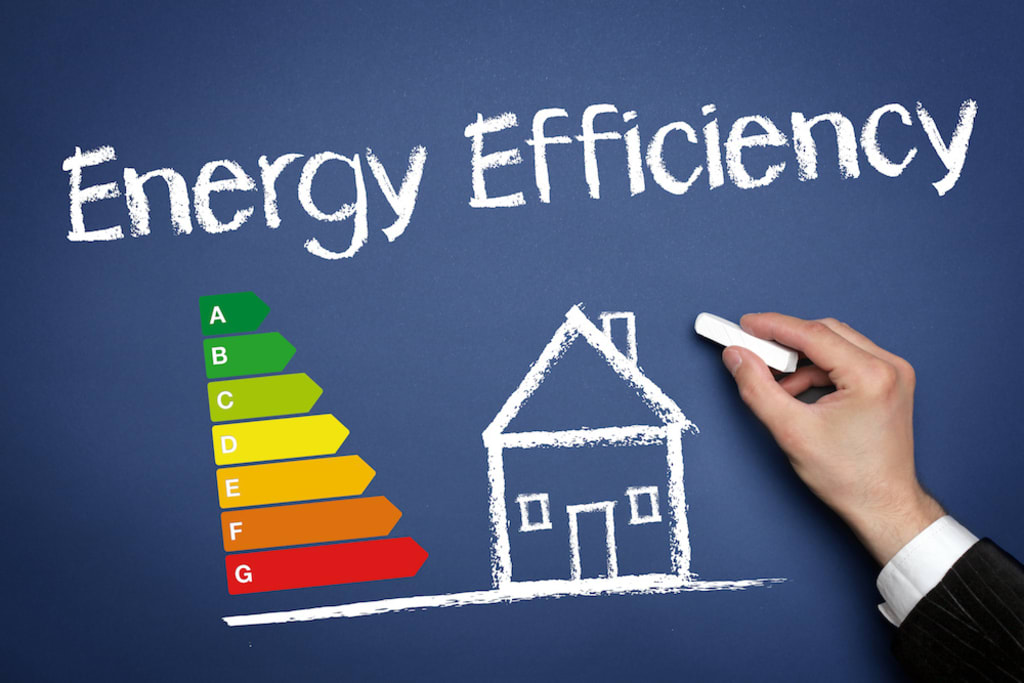6 Ways to Make Your House More Energy-Efficient
If you live in an older home, or your monthly energy costs are through the roof, you may want to consider improving your home’s energy efficiency. There are many different ways to go about doing this, but all of them differ in the costs, the difference they make, and ease of application.

Improvements that make the biggest difference that you will quickly notice start from your home’s outer shell—walls, attic, windows, and doors. After that, it’s best to move on to things like heating, cooling, appliances, and lighting. The last strategy to consider is generating clean energy, such as by using solar panels.
Below are six ways you can raise the energy efficiency of your house.
1. Improve your walls and attic insulation.
Your home’s insulation is there to reduce the amount of heat your house loses in the winter and gains in the summer. Having effective insulation means less required energy to heat or cool the house. The insulation in many older homes is degraded to the point that it’s almost like having no wall insulation at all.
In such cases, getting new insulation blown-in can make a huge difference in improving the comfort of your home and lowering your energy costs. A contractor will drill holes from the outside of your house in-between each stud, using a special insulation blower, he will fill the cavities and patch the hole back up.
Adding insulation to your attic is much easier and also makes a good difference. Keep in mind that an experienced contractor is just as important as choosing your insulation material. It’s crucial for the insulation to be properly installed in order to make the biggest difference. A good contractor will use an infrared camera after installation to see if there are any voids that need to be corrected.
2. Upgrade or replace windows.
If your windows are leaky, upgrade the weatherstripping to boost their efficiency. However, if your house still has old single-pane windows, it’s time to consider replacing them with new double or triple pane windows.
Replacing regular double pane windows with new Energy Star-rated replacements won’t provide big energy savings. But replacing single pane windows with efficient double pane ones can result in significant savings.
3. Replace your old furnace with a high-efficiency one.
Furnaces made before 1992 come with a standing pilot, which waste around 35 percent of the fuel they use. So unless you’re in a warm climate, replacing your old furnace with one that has an efficiency of at least 90 percent is a good idea. It can result in a 27 percent savings on your heating bill since it doesn’t waste more than 10 percent of the natural gas you buy.
Houses with furnaces installed after 1991 probably come with an annual fuel utilization efficiency (AFUE) rating of 80 percent. So your energy savings would be smaller, but still worth considering. An energy auditor can help determine that actual AFUE rating of your current system to help you decide if it’s time to replace it.
4. Improve your hot water system efficiency.
The first step is to reduce the temperature of your water heater to a comfortable setting of 120 degrees Fahrenheit. After that, you should insulate your hot water lines to prevent them from cooling off too quickly between uses. The last step is to install low-flow fixtures in your shower and bath. If your current water heater is working well, there is probably no need to replace it.
What you can do is to add “on demand” hot water circulating loops. They use a small pump to speed up the delivery of hot water to remote fixtures and really work great with low-flow fixtures. When you turn on a kitchen or bathroom faucet, they activate but turn off once the hot water reaches the fixture.
5. Replace your light bulbs with new LED bulbs.
If your house still has incandescent bulbs, it’s time to replace them. The new energy-efficient LED bulbs are even more efficient than CFL bulbs. Although they cost more up front, they last up to five times longer than your standard bulbs. So when you combine their durability with the energy savings they offer, over time you can save a significant amount of money.
6. Get a professional home energy audit.
You can read all the articles on the internet and still not have a clear understanding of what needs to be done for your particular house. This is where it pays to get a professional energy audit. These trained professionals have advanced assessment tools and a deep knowledge of saving energy.
Using their knowledge and tools, they come to your house and examine each area of your house to see where improvements can be made. This way you will know what will give you the biggest energy savings so you don’t waste your money on doing things that won’t make a big difference.
About the Creator
Amelia Grant
I am journalist, and blogger.
Enjoyed the story? Support the Creator.
Subscribe for free to receive all their stories in your feed. You could also pledge your support or give them a one-off tip, letting them know you appreciate their work.






Comments
There are no comments for this story
Be the first to respond and start the conversation.